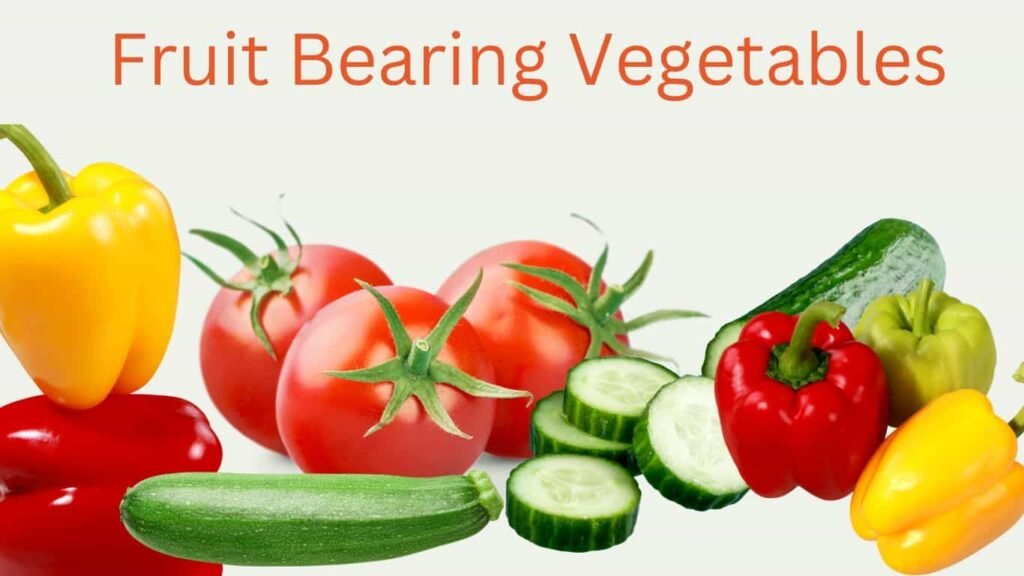Cucumbers are versatile plants, so you can grow them indoors or outdoors, as they can thrive in containers, garden beds, etc. That’s why growing cucumbers is a perfect choice for beginners and experienced gardeners.
All you need is to provide full sun and well-drained soil. If you want to grow vertically, then you also have to provide a trellis or cages so that they can climb and save space. Besides this, indoor cucumbers can be grown in large pots, too.
In this article, I will tell you how to grow cucumbers vertically, how to grow cucumbers in pots, how often water should be provided, what is the best variety that you can grow, what plant you can grow with cucumbers to maximize harvesting, and much more.
Choose the right cucumber varieties
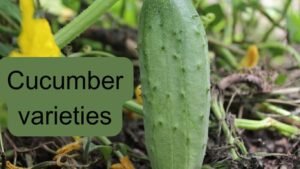
When you want to grow cucumbers at home, you first have to decide what varieties you want to grow depending on your space, whether you are growing outdoors or outdoors.
Plus, how do you want to use the cucumbers, like for salad or pickle? Besides this, there are also organic and hybrid varieties. However, here is how to make the best choice when choosing cucumber varieties to grow at home:
Different cucumber varieties
There are about 100 cucumber varieties, but here are just four that I am mentioning because they are more popular and better:
Slicing cucumbers: They are large, longer, and have white, smooth skin and mild flavors. That’s why it’s a good choice for salads and snacks. For outdoor gardening, like in your backyard, you can choose varieties like Marketmore and Straight Eight. They are quite a popular choice to have in a garden.
Pickling cucumbers: They are shorter and bumpier cucumbers. So, if you want to make pickles, you can choose varieties like Boston Pickling or National Pickling. They have a little thinner skin. And that’s why they are ideal for greening.
Seedless cucumbers (English cucumbers): They are also known as “Burpless” cucumbers. These types of varieties are less bitter and easier to digest. And they are a little longer and straight.
So, if you want to grow this type of plant, you can go with the Telegraph or English cucumber variety. The good thing about this variety is that it can be grown indoors and outdoors.
Mini Persian cucumbers: They are smaller in size and more uniform. Plus, they have very thin skin. Completely opposite of pickling cucumbers. So that’s why Persian cucumbers are great for snacking, salads, and Middle Eastern dishes.
Best cucumber variety for indoor versus outdoor growing
There are different varieties of indoor growing and outdoor growing. Let’s understand them one by one-by-one:
Indoor growing:
If you want to grow cucumbers indoors, then you can go with compact or bush varieties because they will work really well and need less space.
Varieties like Patio Snacker or Bush Champion are perfect for indoor gardening. Besides this, seedless varieties are also good for indoor growing because they can thrive relatively well in controlled environments, and you don’t need too much pollination.
Outdoor growing:
If you want to grow cucumbers outside, then you can go to the market more or pickle cucumbers like homemade pickles. They will perform well in garden beds because they need enough room to spread. However, if you grow them vertically instead of in pots, they will produce more high yield.
Organic vs. Hybrid cucumber varieties: which one should you choose?
Well, I personally have both, and you can choose whichever you like, and that’s why it is important to know about both varieties, including organic and hybrid. So let’s go one by one:
Organic Varieties
If you want an all-natural growing experience, then I suggest you go with organic varieties.
Organic seeds are untreated and non-GMO, so they support eco-friendly and sustainable gardening practices.
You can grow varieties like Lemon Cucumber or Marketmore 76, as they offer good disease resistance and they are perfectly ideal for organic growers. Plus, if you want to grow in natural soil and avoid chemical input, they will still perform better.
Hybrid Varieties
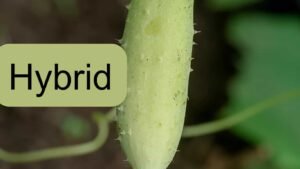
Hybrid varieties are selectively made for higher yield, disease resistance, and faster growth.
So, if you are looking for reliable and consistent results, especially when you are living in unpredictable growing conditions, then I suggest you go with hybrid varieties.
You can choose varieties like Sweet Success or Diva. They might be ideal. Hybrids are also easier for beginner gardeners because they improve resistance to common pests and diseases. That’s why you don’t need to care a lot.
Which one should I choose, hybrid or organic?
For beginners or those with limited space: You can choose the hybrid varieties because they are really easy to grow and provide higher yields, and they are less maintenance-intensive.
Plus, even if you are an indoor gardener who wants to grow cucumbers at home, the hybrid cucumber variety will be perfect for you. As a beginner gardener, you want to go with compact seedless or bush hybrid varieties.
For organic enthusiasts: if you love organic vegetables and want organic cucumbers, then I suggest you go with varieties that are organic, such as Marketmore 76, Straight Eight, Lemon Cucumbers, etc.
However, they will require a little more attention as compared to hybrid varieties, but they are organic. You just have to provide a little care and save your plant from pests and disease.
Preparing to Graw cucumber
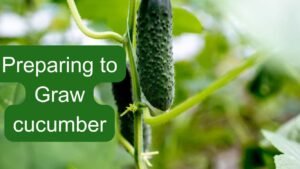
Light Condition: Cucumbers thrive in warm and sunny conditions, and they prefer temperatures between 70 to 85°F during the day and at least 60 °F at night.
That’s why you have to provide at least 6 to 8 hours of direct sunlight every day.
Soil: Now, if we talk about soil, then they perform well in well-draining soil that has a pH of around 6.0 to 7.0.
You can also provide cucumber nutrient-dense soil for better growth with high organic matter. Besides this, you can also amend the soil with compost or aged manure before planting. It will help your plant to thrive.
Cucumbers have a relatively shallow root system. Therefore, you have to provide loose and loamy soil so that roots can spread out easily.
You want to avoid heavy, dense clay soil. Plus, you can also add some sand or perlite to improve drainage if needed.
However, if you are growing cucumbers in pots, make sure to use a high-quality potting mix formulated for vegetables, as it will provide the right nutrients, balance, and drainage.
The most important things to remember are:
- Full sun exporter
- Warm temperature
- Rich, well-draining soil with good organic content
- pH levels between 6.0 and 7.0.
How to prepare soil before planting cucumbers?
There are just a few steps for soil preparation:
Test the soil: You want to test your soil to check its nutrients and pH level. You can either use a soil test kit or visit a nearby laboratory for soil tests. Cucumber prefers slightly acidic natural soil with a pH level around 6.0 to 7.0.
Amend the soil: Based on the test result, you can add amendments to correct any imbalances. If you want to grow cucumbers, you will have to add plenty of organic matter like compost or aged manure, as they will help in improving drainage.
Loosen the soil: you can use a garden fork or tiller to loosen at least the top 8 to 12 inches of your soil. By doing so, your cucumber can spread its roots easily.
Create raised beds: If your native soil is heavy or poorly drained, then I suggest you build a raised bed garden. You can fill it with high-quality potting mix or blended soil, which can also enhance drainage.
Organic Soil Amendments and Fertilizer for Cucumber
- Compost: It will provide beneficial microbes and micronutrients to your cucumber plant.
- Aged manure: It’s a good source of nitrogen, phosphorus, and potassium, which are important nutrients for plant growth.
- Peat moss will help retain moisture and improve the soil structure.
- Limestone: It can adjust pH if the soil is too acidic.
However, you can use any organic fertilizer like bone meal, blood meal, or kelp extract to give your cucumber an extra nutrient boost during the growing season.
Plant cucumbers Indoors and Outdoors
There are two ways to grow cucumbers. One is from growing seeds, and the other one is buying seedlings and then growing them.
Starting from Seed
Many experienced gardeners grow cucumbers from seeds. You can also start with seeds around 4-6 weeks before your last expected frost date.
- First of all, you have to have a tray or pot filled with high-quality seed starting mix.
- After that, you can plant the cucumber seed about 1 inch deep and keep the soil continuously moist. You can also use a spray for that.
- After that, you have to provide seedlings with plenty of light or direct sunlight, either from a sunny window or grow lights.
Buying seedlings
If you are a beginner, then I suggest you buy seedlings from a local nursery or a garden center. It’s really easier than growing a cucumber from seed.
You want to look for Stocky, healthy plants that don’t have signs of any disease or pest. After buying from there, you can directly transplant the young plant into the soil, garden pot, or wherever you want to plant.
When to plant outdoors?

Well, it doesn’t matter whether you are growing a cucumber plant from seed or seedlings. You will wait until the soil and air temperatures are reliably warm, around 65 to 75 degrees Fahrenheit.
After that, you can transplant cucumbers outside. It can usually take around 2 to 4 weeks after your last expected forest. Meanwhile, you can harden off the plant by gradually exposing it to more time outdoors, at least for 7 to 10 days or two weeks.
Remember that you have to choose a sunny, spot garden with well-drained soil. There needs to be a space of around 12 to 18 inches if you are growing in rows.
How to grow cucumber in pots
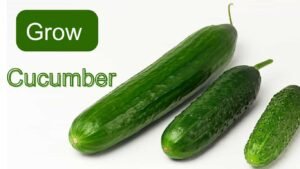
If you want to grow cucumbers in pots or containers, you will want to choose a pot that is around 12 to 18 inches deep and wide. This will provide enough room to spread out cucumber roots.
However, if you choose a large container like 24 inches deep and wider, it will be even better.
Soil for growing in pots: If we talk about the soil that you will need for a pot, then you can go with a potting mix formulated for vegetables and fruits. It will provide the right nutrients and better drainage.
Besides this, you can also mix some compost and aged manure to enrich the soil. However, water is very important when you are growing in pots, as cucumbers want constant moisture.
However, you should not make the soil soggy. You can check the soil every day and water when the top 1 or 2 inches are dry. There are heavy drinkers, so you may even have to water twice a day during summer days.
Tips for placing pots indoors/outdoors
Well, if you are growing cucumbers in pots, then they can grow indoors and outdoors as long as they get enough sunlight.
However, you have to choose a spot outdoors that is getting around 6 to 8 hours of direct sunlight. Besides this, you want to make sure that your pot or containers are elevated off the ground to improve drainage.
If you are growing indoors, then you have to place the pot near a sunny spot. For example, you can place it near a south-facing window, and you can also supplement your plants with grow lights if needed because they can ensure your plant is getting enough light.
However, it doesn’t matter where you place your pot, indoors, outdoors, or other places; you just have to provide a good structure. Like trellis or cage, sunlight, or grow light (if the sunlight is not available).
If you are providing all these things, then it will allow the plants to climb upwards and save your floor, especially when you are growing indoors.
How to grow cucumbers vertically?
Growing cucumbers vertically is one of my favorite techniques, and in my opinion, everybody should go with it if the option is available.
I like growing vertically because it saves garden space, which is perfectly good for a small yard, patios, or balconies where horizontal space is limited.
Besides this, if you grow cucumbers vertically, it will also improve air circulation around the plant, which will help prevent fungal diseases. Moreover, by doing so, you will keep the cucumber off the ground, which makes it less susceptible to pests and diseases.
Plus, vertically grown cucumbers are much easier to harvest. I just noticed that.
How to set up a trellis or support for vertical cucumber growth
There are a couple of options you can consider when you are growing cucumbers vertically:
- The first is trellises. They can be freestanding or attached to a wall. So, you can look for sturdy metal or wooden trellises, usually 5 to 6 feet tall. So the veins can climb up.
- Cages are also a good choice; wire tomato cages work really well for cucumbers, too. Just make sure to get one that is at least 3 feet wide and tall.
- You can also arrange several poles or stacks in a teepee shape, and cucumber vines will climb up there. It’s a space-efficient option.
Well, it doesn’t matter whether you are providing trellis support or not. Whenever your cucumber plant will grow, its veins will look for a place to climb. If they find one, they will climb. It doesn’t matter what it is.
If they don’t find it, they will start spreading on the floor or the ground. However, if they are spreading on the ground, they will occupy too much space. That’s why vertically is still good.
Which is better, the choice for growing cucumber pots or vertical?
Well, it depends on your space. If you have space like a patio, balconies, and limited garden area, then I suggest you go with pots. However, growing cucumbers vertically is a better choice than growing in pots.
When you grow vertically, you will save a lot of space by climbing vines upwards instead of spreading on the ground or your floor if you are growing indoors.
Besides this, it will also improve air circulation, light penetration, etc., and moreover, it will keep the cucumbers off the ground, which reduces disease risk.
Companion Planting for Cucumbers

If you are growing cucumbers at home, you can also grow some more plants with it. Here are some great options that you can grow alongside:
- Marigold: it’s a fragrance flower that helps repel cucumber, beetles, and other pests,
- Radishes: They can help to lose the soil and bring beneficial insects. They prey on cucumber pests.
- Nasturtium: These are trailing flowers and attract aphids away from your cucumbers.
- Dill also attracts beneficial insects like ladybugs and lacewings that eat cucumber pests.
- Borage is a herb that improves the flavor of cucumber and deters aphids.
However, there are also some vegetables that don’t compete with cucumbers for resources. That’s why you can consider growing them with cucumber plants for harvesting more vegetables. Some options include:
- Spinach
- Beans
- Lettuce
- Corn
Now, let’s talk about plants that you should only grow with cucumbers.
Plants to avoid planting directly with your cucumbers
Here are some plants that you must avoid growing alongside with cucumbers:
- Potatoes. They can separate late blight and other diseases that affect cucumbers.
- Aromatic herbs like sage, rosemary, and bay leaf. They can stop cucumbers from growing, and they will start eating resources.
- Melons. They have very similar growing requirements to cucumbers, and they compete for nutrients and space. That’s why you should also keep them away from cucumbers.
However, there are many more plants that you have to avoid and grow as a companion with cucumbers. But you have to do a little bit of research if you want to grow them alongside cucumbers. I just mentioned a few famous people who are thinking of growing them.
Watering, Fertilizing, and Caring for Cucumbers
When you are growing cucumbers, proper fertilization, providing water in the right amount, and taking care of your cucumbers is really important. So let’s know about it one by one.
How often to water cucumbers?
Well, cucumbers have high water needs, and they are also full of water when we eat them.
However, especially during hot and dry weather, you may want to provide water around 1 or 2 inches per week. If you are growing cucumbers in garden beds, then you have to provide water deeply around 1 or 2 times per week. And each time, 1 inch of water is enough. You have to keep the soil moist but not waterlogged.
However, if you are growing cucumbers in pots or containers, you will need to provide water more frequently.
By the way, the most important thing is your location, which will determine exactly how much water you should provide. For example, if you are living in too dry conditions, like India, where the temperature reaches 40 degrees plus during summer, in that case, you will want to provide water twice a day, in the morning and in the evening.
But before providing water, you want to touch the soil. If the top 1 or 2-inch soil is dry, then you can provide water. Otherwise, you should wait.
On average, in countries like America, Australia, and the United Kingdom, where the temperature is not that extreme, like 40-50 degrees Celsius during summer, providing water 2-3 times a week is okay.
Again, I would say you should check the soil from your finger. If it’s dry, then provide it. Otherwise, avoid and wait to get the soil dry.
Cucumber Fertilization Tips
When you are growing cucumbers, fertilization is very important for healthy and productive plant growth. So, here are some tips, including organic and traditional fertilizer options.
If you are an organic gardener, then I would suggest you use compost, aged manure, or organic granular fertilizer that is high in nitrogen, phosphorus, and potassium. You can look for the N.P.K. ratio. It works really well.
After that, you can mix these into the soil before planting and then side-dress plants with a little more compost or fertilizer every 4-6 weeks, especially during the growing season.
On the other hand, if you are a traditional gardener, then you would want to use balanced vegetable fertilizer, either granular or liquid. Again, you will look for an N.P.K. ratio around 5-10-10 or 10-10-10.
After that, you can apply granular fertilizer to the soil at planting time and then follow up with a water-soluble version every 2-3 weeks to provide continuous nutrients to your plant.
However, you can also read about fertilizer instructions on its packaging.
When and how can we fertilize for the best result?
You can use the fertilizer around 1 or 2 weeks before you plant your cucumber seed or transplant seedlings into the soil.
This will give nutrients time to become available to the roots. After that, you can continue feeding your cucumber plant every 4 to 6 weeks throughout the growing season. You simply can’t avoid it.
This will support lush vine growth, flower production, and nice, juicy cucumbers. However, make sure that you don’t over-fertilize it. Providing too much fertilizer can also cause some problems.
Pruning and Maintenance
Proper pruning is very important for the health and productivity of your cucumber crop.
How to prune cucumber for better yield and healthier plant

If you are growing cucumbers vertically on trellises or in a cage, then regular pruning is very important.
You should pinch off any sucker or side shoot, which usually develops on plants. By doing so, your plant can divert all its energy on growing the main veins and producing more cucumbers rather than just spreading out.
When your cucumber plants grow their first female flowers, I recommend pruning the growing tips just above those flowers. It will encourage your plant to direct more energy into fruit production.
Moreover, when veins continue to grow, you can prune off any damaged, diseased, or dying leaves and stems as well. This will also improve airflow around the plant and reduce any risk of fungal issues.
If you are growing cucumbers as bushes or sprawling along the ground, then you can again prune out any crowded, tangled growth and open up the center of the plant. By doing so, your plant can get better light.
However, it doesn’t matter what growing method you follow. You just want to do pruning and maintenance every morning or at least once a week. You can use your hand to prune. Or, you can have a sharp pruner, which you can use to cut just above the leaf node.
Pest and disease management
Cucumbers can be susceptible to a few common pests, such as aphids, cucumber beetles, spider mites, squash bugs, etc. However, it is easy to control these pests using organic pest control. Here are a few options.
You can consider using insecticidal soap or neem oil to physically remove all deter aphids, spider mites, and other soft-bodied.
Besides this, you can place row covers or mesh netting over the plant. It will create a physical barrier and stop beetles, squash bugs, etc.
Moreover, you can also introduce some beneficial insects like ladybugs, lacewings, and parasitic wraps that will prey on pests that usually live on cucumber plants.
Lastly, you can also apply a diatomaceous earth around the base of your plant to deter crawling insects.
By the way, if you prefer a slightly more convenient approach, then I suggest you go with chemicals and insecticides, which contain active ingredients like permethrin or bifenthrin. They will provide you with effective control of beetles and other pests that live on cucumbers.
However, you want to follow the product instructions. Besides this, rotating crops and maintaining good garden sanitation is also a good choice. It will encourage beneficial wildlife and ecosystems.
How to identify and treat diseases in cucumber plants?

There are some common diseases that can occur in a cucumber plant, including powdery mildew, bacterial wilt, angular leaf spots, etc. But the question is, how will you identify them?
Well, there are some signs:
- Powdery mildew is a fungal disease and appears as white powdery growth on your cucumbers, leaves, or stems. It usually thrives in warm and humid conditions.
- Bacterial wilt is caused by bacteria, and this disease causes the plant to suddenly wilt or die. In this disease, your plant’s stem or leaves will become limp or discolored.
- Angular leaf spot is another fungal disease that creates angular water-soaked spots on the leaves. Another upsetting thing about that is that it can separate in cucumbers as well as leaves.
The simple way to identify these diseases is to look for telltale symptoms like white fungal growth, wilting, discolored spots on the foliage, etc. However, now let’s talk about the treatment.
How to treat and prevent cucumber disease?
Some ways to prevent cucumber disease and treat existing diseases are as follows:
- Provide a good air system around the plant.
- Provide water in the morning or in the evening. It will allow foliage to dry during the day.
- You can use a drip irrigation system or water at the base of your plant.
- Remove any affected leaves or stems as soon as you spot the problem, such as discolored leaves.
- You can apply fungicides that are approved for cucumbers as the first sign of disease.
- You want to avoid over-watering, under-watering, etc.
If you are an organic grower, then you can get a product that contains sulfur or copper. And if you are a traditional gardener, you can also use synthetic fungicides.
However, to maintain your cucumber plant’s health and proper growth, you have to provide everything in the right amount, including water, nutrients, fertilization, etc.
To prevent any disease in advance, you can consider crop rotation. Or you can have some companion plants, as I have also mentioned before, like marigolds, radishes, Dills, nasturtiums, etc. If you follow all these things, then your plant will not develop any disease.
How do we know when cucumbers are ready to harvest?
Cucumbers are ready to harvest when their size is around 6 to 8 inches long for slicing varieties. Pickling varieties are around 4 to 6 inches long when they are ready to harvest.
Besides their natural size, you can also look at their vibrant and glossy green skin. For example, you can gently press a cucumber from your thumbnail. If it easily leaves an impression, then it’s time to harvest.
You can use a sharp knife or garden shears to cut cucumbers from the vine. However, you want to leave about an inch of stem attached to the cucumber. It will help prevent bruising and will extend the shelf life.
If you want to harvest pickling cucumbers, you can harvest them more frequently as compared to slicing cucumbers because pickling cucumbers grow frequently.
You can check the plant every 2-3 days and pick one that reaches the normal size.
After harvesting, you want to store your cucumbers in a refrigerator or at room temperature. Please do not wash them. You can simply put them in a plastic bag or container, too.
It will help them maintain their crispness for about five days. For longer-term storage, pickling is the best option, in my opinion.
Troubleshooting Guide for Common Cucumber Problems
Well, you will face three main problems: yellow leaves, poor food, cucumbers, slow growth, etc. Now let’s talk about them one by one and understand how you will tackle them:
Yellow leaves:
If you see your cucumber plant’s leaves turning yellow, then it will happen because either you are providing too much water or too little water. So first of all you have to provide it in the right amount.
Besides this, nutrient deficiency and fungal diseases like powdery mildew can also be the reason. For nutrient deficiency, you will need to provide nitrogen, iron, and other key nutrients so you can use balanced vegetable fertilizer.
Poor cucumber production:
If your cucumber plant is not producing as many cucumbers as you would have expected, then there are some reasons. It can include:
- Inadequate pollination. Make sure there are enough bees and other pollinators around your plant.
- Extreme temperature. Cucumbers don’t like too hot or too cold temperatures. It needs to be balanced.
- Nutrients: Your cucumber plants may need more phosphorus and potassium.
- Pests: Sometimes, pests like cucumber beetles can interfere with cucumber.
If you want to boost your cucumber plant’s fruit production, you can hand-pollinate the flowers. Provide some shade during the hottest part of the day. And most importantly, you want to fertilize properly and treat any pest infestation.
Slow Cucumber Growth:
If your cucumber plant is not growing as it should grow, and it’s slow, then there are some reasons that are causing this issue:
- Insufficient sunlight: Make sure your cucumber is getting at least 6 hours of direct sunlight every day.
- Inadequate soil nutrients: You want to work in some compost or vegetable fertilizer.
- Transplant shock: You have to be gentle when transplanting seedlings.
- Pests: Check the leaves, stems, and roots for any problems or signs.
If you follow all these steps that I’ve mentioned, you can tackle the slow growth problem. You just have to provide light and proper soil and protect your plant from disease. And then it can grow as fast as it should grow.
Conclusion
It’s easy to grow cucumber at home, in pots, or vertically. You just have to choose the right variety, provide 6 to 8 hours of direct sunlight, and the right size of pots. Well-draining soil with a pH level of 6.0 to 7.0.
Besides this, a little care and maintenance are also important. If you do all these things, then you can easily grow cucumbers.
How long does it take to grow cucumbers from seed to harvest?
Well, cucumbers generally take around 50 to 70 days to get mature if you are growing them from seed to harvest.
However, it also depends on the variety because most slicing cucumbers are ready to pick up around 55 days. On the other hand, pickling varieties mature faster.
Can cucumbers grow indoors year-round?
Of course, cucumbers can be grown indoors year-round, as long as you just provide them with necessary growing conditions, such as light, which is at least 6 hours, fertilizer, ideal soil, and ideal temperature between 70°F to 85°F.
You can choose bush varieties if you want to grow them indoors because they will take up less space, and it’s easy to manage them in containers.
What’s the best way to grow cucumbers in a small space?
Well, if you have a small space, then you can consider growing cucumbers vertically. It is the best method. You can use trellises, stacks, or netting to support the veins as they grow upward. So, it will not just save space by not letting your cucumber vines grow on the ground, but it will also improve air circulation.
Why are my cucumber plants turning yellow and not producing fruit?
It might be happening because of yellow leaves, also known as chlorosis. It happens because either you are providing too much water, the soil is poor in drainage, or there is nutrient deficiency, especially nitrogen.
Another common cause is bees, which are caused by cucumber plants needing hand pollination to produce fruit.
So, for indoor plants, you can manually transfer pollen between flowers with a small brush. Besides this, you want to ensure proper soil drainage and avoid too much water.
How often should I water to cucumber plants?
Cucumber plants need consistent moisture. Now it depends on your growing condition. You can provide water two or three times a week, but before that, you want to check the soil from your hand. If one or two inches is dry, then you can simply provide water deeply.
Is Vertical Gardening Better for Cucumbers?
Yes, vertical gardening is better for cucumbers, especially if your area is small and you want to maximize the yield. Plus, growing cucumber vertically improves air circulation and reduces fungal disease risk. Moreover, it’s easier to spot cucumbers when you want to harvest.

